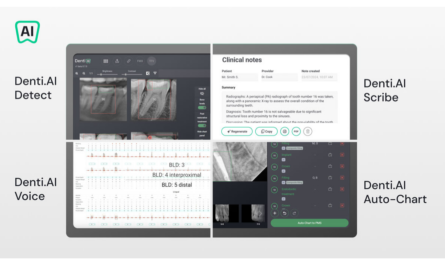Sponsored Content: Dentrix Enterprise
The benefits of centralization within a DSO
In his role as CIO of Thinc Forward, Tom Barberio has helped numerous DSOs navigate just about every obstacle related to onboarding technology solutions for their business. He often finds that organizations are afraid of changing to a centralized practice management system because it will be too difficult and costly. Some DSOs realize they have problems caused by using multiple systems, but they worry that consolidating them will cause significant operational disruption.
Fortunately, Barberio says that with the right technology partner and a well-established implementation method, centralizing a DSO can create efficiencies, savings and happier staff and patients in short order. In the following article, Barberio provided several reasons DSOs should consider centralization.
Visibility
“The first benefit we see in centralization for DSOs is the visibility they gain for operating their organization,” said Barberio. “Starting with consolidated metrics they’ll more easily see their overall production collections and the health of the practice. Centralization allows them to run analytics across their entire platform and then drill down to the performance of individual locations even if they’ve got multi-specialties and multiple lines of business.”
Actionable insights
Data available through centralization allows DSOs to hone in on specific areas of their operations to identify improvements. “Practices can see what areas of production are profitable for them, whether it be chair time, utilization of practitioners, different types of procedures – all of the key performance indicators of their business,” Barberio said. Centralization creates universal visibility across locations.
Cost-savings
Not centralizing will cost DSOs more money in the long term, Barberio said. They’ll end up with more money being spent on IT for breaks, repairs, and the products they buy. By not centralizing, DSOs are “not benefiting from economies of scale,” he said. They may, for example, end up spending more money on practice management systems because they’re paying for supporting 10-15 locations individually. In addition, organizations that centralize can often find savings and increased efficiency when functions such as insurance processing and billing are handled by a central team.
Cohesive patient care
DSOs that don’t centralize, especially those that offer multiple specialties, are often plagued by a lack of cohesive patient care. “When patients go between locations, it creates a very disjointed experience if the organization isn’t able to share the patients’ records.”
Patient lifecycle
Effective centralization makes the deepest impact when using a practice management solution that covers the entire patient lifecycle. Barberio recommends Dentrix Enterprise to DSOs. Not only does it easily connect practice technology into one management system, one database, one workflow – so teams work smarter – but Dentrix Enterprise also allows practices to improve core practice workflows such as managing patient appointments, clinical encounters, payments, and recare from start to finish. He shares, “Dentrix Enterprise has built a suite of products around the entire patient lifecycle, from the initial visit, to expert clinical care, to billing and collections, and then to retaining that patient going forward.”
Dentrix Enterprise helps DSOs, large-group and multisite dental practices, tackle the complexities of centralization with ease.
For more information or to request a demo, visit DentrixEnterprise.com.






